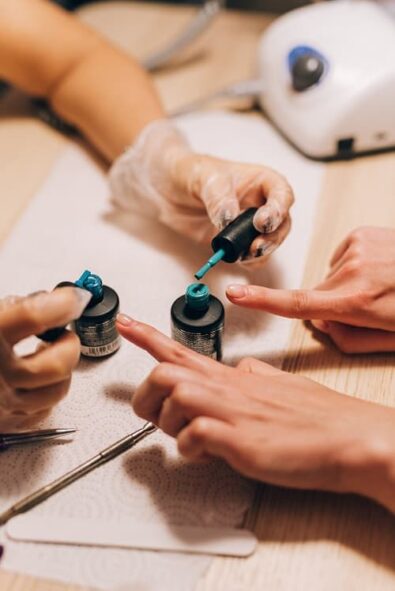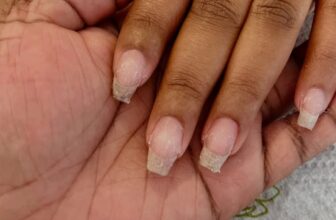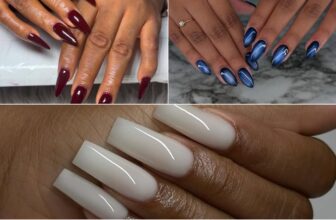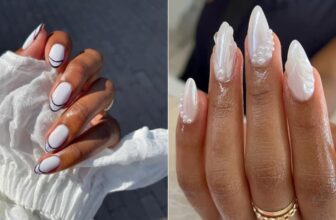Often, the excitement of having beautifully adorned nails gets interrupted by an unexpected inconvenience. You might find yourself dealing with itchy blisters and redness around the nail skin, signaling the emergence of an allergy. Specifically, it’s known as a gel nail allergy, a condition that arises when your skin or nails react negatively to the chemicals present in gel nail products.
For avid nail art enthusiasts, this can be quite a setback, as it means putting those charming nail designs on hold for a while. Therefore, understanding these allergies and learning how to prevent or manage them becomes crucial. Ahead we will provide you guidance on navigating nail allergies and minimizing the impact they can have on your nail care routine.
How Do Gel Nail Allergies Happen?
Gel nail allergies typically occur when your nails’ immune system reacts adversely to the chemicals present in gel nail products. Here’s a breakdown of how these allergies can happen:
Chemical Sensitization:
Some people have a heightened sensitivity to the chemicals commonly found in gel nail products. This sensitivity may develop over time with repeated exposure. The primary allergens are often the acrylate compounds used in the gel, such as methacrylates.
Skin Contact:
Gel nail products are applied directly to the nails and surrounding skin. If any of these chemicals come into contact with the skin, it can trigger an allergic response. This is more likely to happen if the product is applied sloppily, causing it to touch the skin around the nails.
Nail Preparation:
The preparation process for gel nails, which may involve filing, buffing, and the use of primer or bonders, can also expose the skin to the chemicals. Inadequate ventilation in nail salons can exacerbate this issue.
Curing Process:
The curing process, where the gel is exposed to UV or LED light to harden, can release fumes that some individuals may be sensitive to. Prolonged exposure to these fumes can lead to allergies.
Previous Allergies:
Individuals who already have allergies to similar chemicals, such as those found in acrylic nails or certain adhesives, may be at a higher risk of developing gel nail allergies.

Symptoms of Gel Nail Allergies
Allergic reactions to gel nails can manifest as:
- Redness: Skin around the nails may become red and inflamed.
- Itching: Affected areas can itch intensely.
- Swelling: Fingers or nails might become swollen.
- Blisters: Some people may develop small blisters or hives.
- Pain: In severe cases, there may be pain or discomfort.
How to Avoid Gel Nail Allergies
-
Patch Testing:
Before getting a full gel manicure or nail extension, consider a patch test. Apply a small amount of the gel product on a small area of your skin to check for any adverse reactions.
-
Use Hypoallergenic Products:
Look for gel nail products labeled as hypoallergenic or formulated for sensitive skin. These products often contain fewer potentially allergenic chemicals.
- Limit UV/LED Lamp Exposure:
Minimize the time your skin is exposed to UV or LED lamps during the curing process. Use fingerless UV gloves to protect your hands.
-
Proper Application:
Ensure that the gel nail products are applied correctly by a trained and experienced nail technician. Poor application can increase the risk of allergies.
-
Regular Maintenance:
Avoid leaving gel nails on for an extended period. Regularly maintain them and give your nails a break in between applications to reduce the risk of allergies.
-
Read Labels:
Always check the ingredient labels of gel nail products for any known allergens. Be cautious if you have a history of skin allergies.
-
Consult a Dermatologist:
If you suspect an allergy or experience symptoms, consult a dermatologist. They can diagnose the issue and recommend appropriate treatment.
Treatment for Gel Nail Allergies
If you develop an allergy to gel nails, treatment may involve the following:
- Topical Steroids: Dermatologists often prescribe topical corticosteroids to reduce inflammation and itching.
- Oral Antihistamines: These can help relieve itching and other allergy symptoms.
- Nail Removal: In severe cases, you may need to remove the gel nails and allow your natural nails to heal.
- Avoidance: The most effective way to manage gel nail allergies is to avoid using gel nail products that trigger the reaction.
Remember that allergies can vary in severity, so it’s crucial to take them seriously and seek professional advice if you experience any symptoms. Being proactive and informed can help you enjoy beautiful nails without the risk of allergies.






